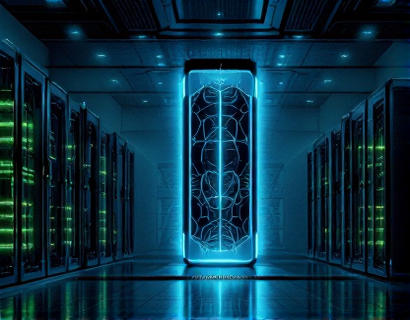Maximizing NFT Ecosystem Growth: Innovative Ecommerce Solutions for Digital Creators and Businesses
The non-fungible token (NFT) market has surged in popularity, offering unprecedented opportunities for digital creators and businesses. To thrive in this dynamic landscape, it is crucial to leverage advanced eCommerce tools and innovative solutions that streamline the launch and management of NFT projects. This comprehensive guide explores essential services that empower creators and businesses to maximize their potential in the evolving NFT ecosystem, focusing on cutting-edge technology to enhance every step of the process.
Understanding the NFT Ecosystem
The NFT ecosystem is a complex network of creators, collectors, platforms, and marketplaces. Creators produce unique digital assets, which can range from art and music to collectibles and virtual real estate. These assets are stored on blockchain networks, ensuring authenticity and scarcity. The eCommerce aspect of the NFT ecosystem involves the buying, selling, and trading of these digital assets, requiring robust and user-friendly platforms to facilitate transactions and engagement.
Key Challenges in NFT Ecommerce
Despite the growth, the NFT eCommerce space faces several challenges. These include technical complexity, security concerns, and the need for seamless user experiences. Creators and businesses often struggle with the technical aspects of launching and managing NFT projects, from setting up smart contracts to handling transactions and customer support. Additionally, ensuring the security of digital assets and providing an intuitive interface for users are critical for success in this market.
Advanced Ecommerce Tools for NFT Projects
To overcome these challenges, innovative eCommerce solutions have emerged, designed specifically for the NFT space. These tools simplify the process of launching and managing NFT projects, making it accessible for creators and businesses of all sizes. Some of the key features include:
- Smart Contract Integration: Automating the creation and management of smart contracts to ensure secure and transparent transactions.
- Customizable Marketplaces: Building branded marketplaces that offer a unique user experience, complete with customizable templates and branding options.
- Inventory Management: Tools to manage NFT collections, track inventory, and monitor sales performance.
- Payment Gateway Integration: Seamless integration with various payment gateways to facilitate smooth transactions.
- Analytics and Insights: Comprehensive analytics to track user behavior, sales trends, and market insights.
These tools not only simplify the technical aspects but also enhance the overall user experience, driving engagement and maximizing potential in the NFT market.
Launching an NFT Project
Launching an NFT project requires careful planning and execution. Here’s a step-by-step guide to getting started:
1. Define Your Project: Clearly outline the purpose and scope of your NFT project. Determine the type of digital assets you will create and the target audience.
2. Choose a Blockchain: Select a blockchain platform that aligns with your project goals. Popular choices include Ethereum, Binance Smart Chain, and Solana, each offering different features and costs.
3. Create Digital Assets: Use digital creation tools to produce your NFTs. This could involve graphic design, 3D modeling, or coding unique digital experiences.
4. Set Up Smart Contracts: Utilize eCommerce tools that provide pre-built smart contract templates or work with developers to customize contracts to meet your project’s needs.
5. Launch Platform: Deploy your NFT project on a dedicated marketplace or integrate it into an existing eCommerce platform. Ensure the platform is user-friendly and secure.
6. Marketing and Promotion: Develop a marketing strategy to reach your target audience. Utilize social media, influencer partnerships, and community engagement to generate buzz around your project.
Managing an NFT Project
Once launched, managing an NFT project involves ongoing tasks to maintain engagement and drive sales. Key management tasks include:
1. Customer Support: Provide timely and effective support to address user queries and issues. This builds trust and enhances the user experience.
2. Inventory Updates: Regularly update your inventory with new NFTs or limited edition drops to keep the market fresh and engaging.
3. Community Building: Foster a community around your project through regular updates, events, and interactions on social media and dedicated forums.
4. Performance Analysis: Use analytics tools to monitor sales, user behavior, and market trends. This data helps in making informed decisions and optimizing strategies.
5. Partnerships and Collaborations: Collaborate with other creators, brands, or influencers to expand your reach and tap into new audiences.
Innovative Solutions for Enhanced Engagement
To drive engagement and maximize the potential of your NFT project, consider implementing the following innovative solutions:
1. Interactive Experiences: Create immersive experiences such as virtual exhibitions, games, or augmented reality (AR) elements that allow users to interact with NFTs in unique ways.
2. Gamification: Introduce gamified elements like challenges, rewards, and leaderboards to encourage user participation and retention.
3. Subscription Models: Offer subscription-based access to exclusive content, early releases, or special perks to loyal users.
4. Decentralized Applications (dApps): Develop dApps that extend the functionality of your NFT project, such as virtual stores, social networks, or marketplace features.
5. Cross-Platform Integration: Ensure your NFT project is accessible across multiple platforms, including web, mobile, and social media, to reach a broader audience.
Security Considerations
Security is paramount in the NFT ecosystem. Here are some essential measures to protect your project and users:
1. Use Trusted Platforms: Deploy your NFT project on reputable and secure blockchain platforms with a proven track record.
2. Regular Audits: Conduct regular security audits of smart contracts and infrastructure to identify and mitigate vulnerabilities.
3. User Education: Educate users about best practices for securing their digital assets, such as using strong passwords and enabling two-factor authentication.
4. Insurance Options: Consider offering insurance options for high-value NFTs to provide an additional layer of protection for collectors.
5. Transparent Communication: Maintain transparency with your audience regarding security measures and any incidents that may occur.
Future Trends in NFT Ecommerce
The NFT ecommerce landscape is rapidly evolving, with several trends shaping the future:
1. Interoperability: Increased interoperability between different blockchain platforms, allowing NFTs to be used across various ecosystems.
2. Sustainability: Growing focus on environmentally friendly blockchain solutions, such as proof-of-stake (PoS) consensus mechanisms.
3. Regulatory Clarity: Greater regulatory clarity and frameworks to support the growth and adoption of NFTs.
4. Enhanced User Interfaces: More intuitive and user-friendly interfaces, making NFTs accessible to a wider audience.
5. Integration with Traditional Markets: Increased integration of NFTs with traditional art and collectibles markets, bridging the gap between physical and digital assets.
Conclusion
Maximizing the growth of an NFT project requires a strategic approach that leverages advanced eCommerce solutions and innovative tools. By simplifying the launch and management process, driving engagement, and ensuring security, creators and businesses can thrive in the dynamic NFT ecosystem. Embracing these solutions not only enhances the user experience but also positions projects for long-term success in the ever-evolving world of digital assets.











































